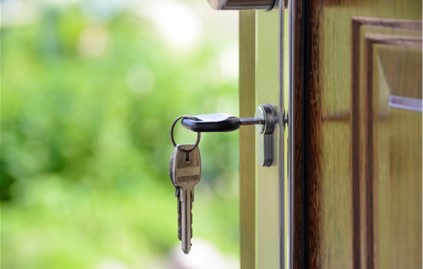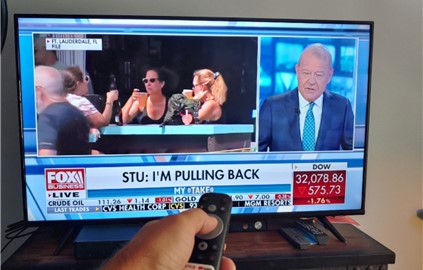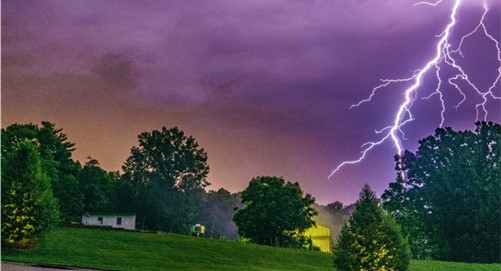Image Credit: Dave Morgan (Pexels)
The Winds are Changing for Housing, How Long Can Prices Remain High?
Is the Housing market in a correction? Corrections, although unpleasant if your long the asset class, are viewed as normal and healthy. Home values have been climbing for a while. The forces that helped drive other markets higher over the past few years were also at work pushing residential properties up at an unsustainable pace. This year the stock and bond markets have come off of their steamy highs, it appears real estate and housing are setting up to do the same.
On Tuesday (July 19), it was reported by the National Association of Home Builders (NAHB) that Single Family Starts fell to a two year low of 2%. This came just one day after it was reported that home builder confidence dropped by a steep 12 points to 55 in July. That separate report was a release of the National Association of Home Builders/Wells Fargo Housing Market Index. Sentiment has accelerated downward since December when it stood at 84 (based on 100). It is now at its lowest level since May 2020 and faced with tighter money conditions going forward.
In addition to tighter money (ie, higher mortgage rates), housing headwinds include building material supply chain bottlenecks and elevated construction costs. According to the NAHB, for the first time since June 2020, both single-family starts and permits fell below a 1 million annual pace.
Housing Starts
By falling 2%, housing starts were at a seasonally adjusted annual rate of 1.56 million units in June, according to the U.S. Department of Housing and Urban Development and the U.S. Census Bureau. The June reading of 1.56 million starts is the number of housing units builders would begin if development kept the current pace for the next 12 months. Using this overall number, single-family starts decreased 8.1% to a 982,000 seasonally adjusted annual rate. This is the lowest single-family starts pace since June 2020. Multifamily dwellings, which include apartment buildings and condos, were on the upswing; this sector increased 10.3% an annualized 577,000 pace.
“Single-family starts are retreating on higher construction costs and interest rates, and this decline is reflected in our latest builder surveys, which show a steep drop in builder sentiment for the single-family market,” said Jerry Konter, chairman of the National Association of Home Builders (NAHB). By itself, fewer homes being built and entering the market could be bullish for home sales, but the reason for the slowdown, according to Mr. Konter, is “Builders are reporting weakening traffic as housing affordability declines.”
NAHB Chairman Konter said 13% of builders who participated in the monthly survey said they had reduced home prices over the last month to lure buyers.
Rober Dietz, the chief economist at the NAHB said, “While the multifamily market remains strong on solid rental housing demand, the softening of single-family construction data should send a strong signal to the Federal Reserve that tighter financial conditions are producing a housing downturn. Dietz is concerned that supply may not match needs, “Price growth will slow significantly this year, but a housing deficit relative to demographic need will persist through this ongoing cyclical downturn.”
Regionally and on a year-to-date basis, combined single-family and multifamily starts are 4.4% lower in the Northeast, 4.7% higher in the Midwest, 11.1% higher in the South, and 0.4% lower in the West.
Housing Permits
Overall, permits to build a new home decreased 0.6% in June. Single-family permits decreased 8.0%. This is the lowest pace for single-family permits since June 2020. Multifamily permits again increased by 11.5% to an annualized 718,000 pace.
Regional permit data on a year-to-date basis, permits are 5.1% lower in the Northeast, 2.5% higher in the Midwest, 2.9% higher in the South, and 3.0% higher in the West.
Interest Rates
The average contract interest rate on a 30-year fixed-rate mortgage climbed to 5.51% for the week ending on July 14. The same rate was just below 3% one year earlier.
Take Away
The NAHB indicated a drop in confidence within the housing market due to the impact of high inflation on building costs and rising interest rates. This has resulted in “dramatically slowing sales and buyer traffic.”
Mortgage rate increases come at a time when houses are still at or near their highs from the surge experienced during the pandemic. The housing “correction” could bring monthly costs of owning a home in line with what they had been prior to recent mortgage rate increases. This would mean prices low enough to equate to the same monthly outlay to the buyer. Should the economy weaken further, there is the potential for home prices to decline further.
All markets impact the others. When housing prices rise, people feel better about their financial situation. Owners also find it easier to borrow against their home’s appreciation. The economy and stock markets all tend to do better. Home prices have remained near their highs, a shallow correction might be welcome to those that are just now looking to enter the market for a home.
Managing Editor, Channelchek
Suggested Content
 What Will It Take to End Rampant Home-Price Inflation?
|
 Avoiding the Noise and Focusing on Managing Your Investments
|
 The Soft Landing Challenge, Fed Chairman Makes No Promises
|
 US Dollar Strength, Commodities Weakness, and Fed Resolve
|
Stay up to date. Follow us:

|
